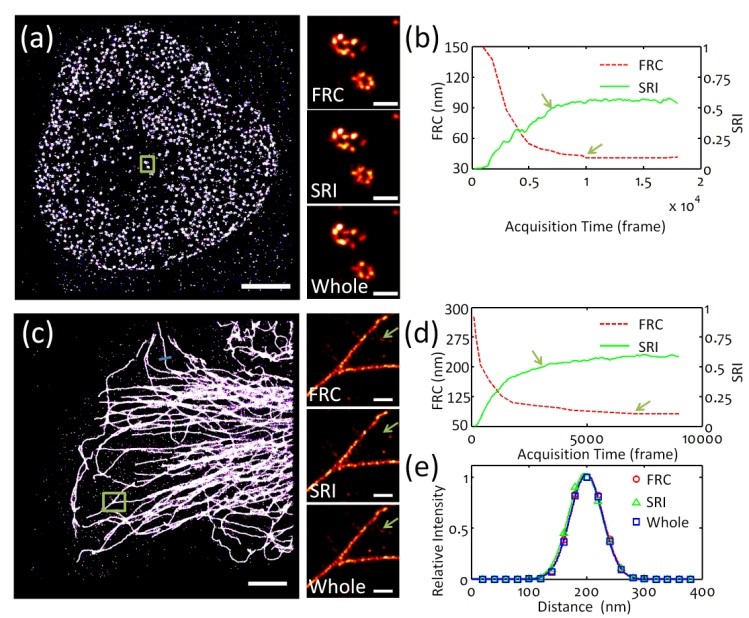Super-resolution fluorescence microscopy is one of the most important breakthroughs in optical microscopy in the 21st century, and is awarded with the Nobel Prize for Chemistry in 2014. Super-resolution localization microscopy (SRLM) is a representative super-resolution imaging technique. With the combination of single-molecule fluorescence microscopy and high-precision molecule localization, SRLM is able to use a simple optical set-up to provide 20~30 nm spatial resolution that enables unprecedented opportunities for biomedical researches. However, in an SRLM experiment, researchers usually acquire as many raw images as possible to maximize hopefully the resolution of a final super-resolution image. This kind of experimental strategy leads to excess data volume that would cause a significant waste of data acquisition time and computation resources for further data transfer, storage, and analysis.
Under the guidance of Prof. Zhen-Li Huang from Britton Chance Center for Biomedical Photonics, Wuhan National Laboratory for Optoelectronics, Yujie Wang (a PhD candidate in Huang’s group) proposed to use structure-resolving index as an efficient criterion for automatically determining the ending point of an SRLM experiment. This criterion significantly reduces the excess acquisition of raw images and minimizes the computation ressources, without sacrificing the resolving power in the super-resolution image. This study is reported recently in Optics Letters, 1stJune , 2019, Vol. 44, Iss. 11, pp. 2633-2636.

Figure . Imaging performance comparison of different ending criteria on U-2 OS cells. (a-b) Nuclear pore complexes. (c-e) Microtubules.